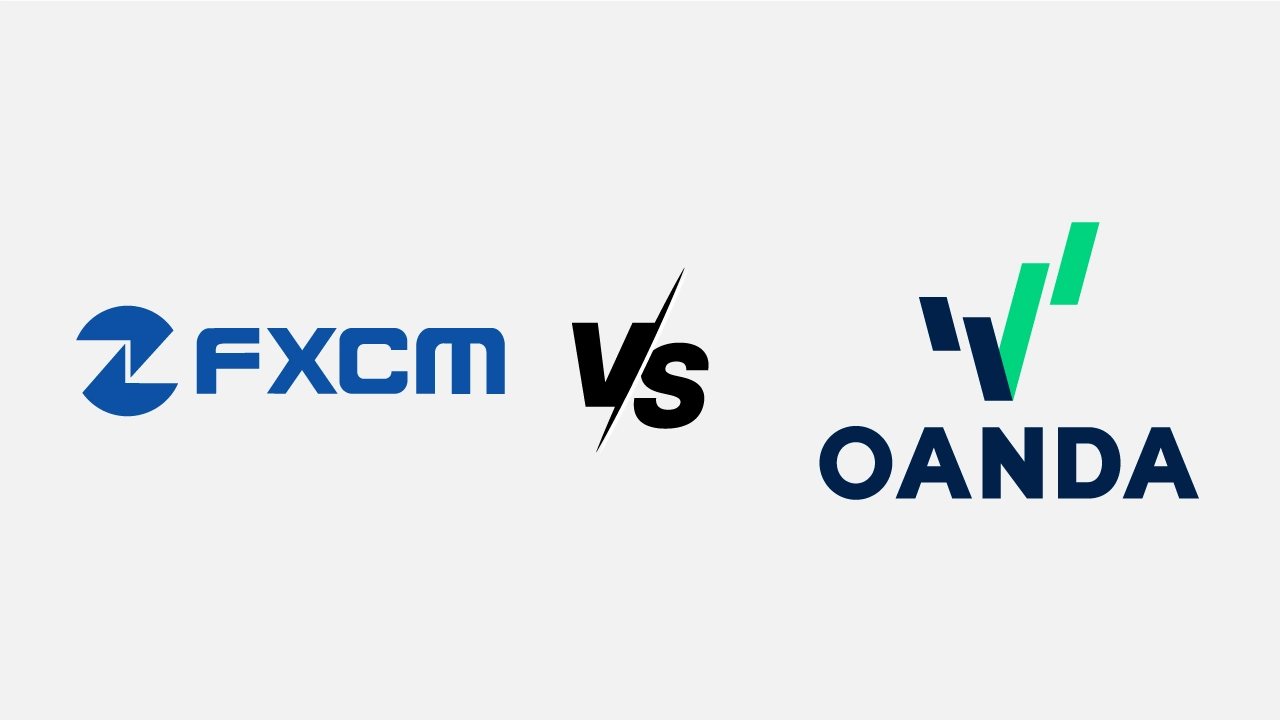Explore the differences between FXCM and Oanda to identify the best broker for your Forex trading needs.
When choosing between FXCM and Oanda, two well-established Forex brokers, it’s important to evaluate their features, fees, platforms, and overall offerings. This review will help you determine which broker suits your trading needs best.
Overview of FXCM and Oanda
Both FXCM and Oanda are highly trusted brokers with strong reputations in the Forex and CFD market. Oanda was founded in 1996, while FXCM was established in 1999. Both brokers are regulated by multiple Tier-1 financial authorities, including the FCA in the UK and ASIC in Australia.
Oanda stands out for its wide variety of tradeable assets and global reputation, offering access to over 3,900 financial instruments, including Forex, stocks, commodities, and cryptocurrencies. FXCM, on the other hand, has a smaller range with around 440 instruments but is especially recognized for its advanced trading tools and algorithmic trading support.
Trading Platforms
Both brokers provide a solid range of trading platforms, including proprietary options and support for popular tools like MetaTrader 4.
FXCM:
- Offers Trading Station, a proprietary platform, as well as TradingView integration.
- Supports MT4 but does not offer MT5.
- Popular for algorithmic trading and social trading via ZuluTrade.
Oanda:
- Provides fxTrade, a proprietary platform known for its ease of use.
- Supports both MT4 and MT5, giving it an edge for traders who prefer the latest MetaTrader tools.
- Lacks ZuluTrade, but still supports copy trading via Myfxbook.
Platform Comparison
Trading Costs and Fees
FXCM:
- EUR/USD average spread: 0.78 pips (lower than Oanda’s).
- Charges inactivity fees after one year of inactivity.
- Offers Active Trader discounts for high-volume traders.
Oanda:
- EUR/USD average spread: 1.61 pips, generally higher than FXCM.
- Also charges inactivity fees after one year.
- Does not offer tiered discounts for high-volume traders but has a $0 minimum deposit requirement.
Fee Comparison
Research and Education
Both brokers offer strong research and educational tools, though Oanda has a slight edge in market research.
FXCM:
- Provides daily market analysis, Trading Central, and TipRanks insights.
- Great for algorithmic traders seeking advanced analysis tools.
Oanda:
- Delivers high-quality research via Autochartist, Market Pulse, and economic calendars.
- Provides superior insights into market trends and economic data, making it more suitable for traders who value in-depth research.
Regulation and Security
Both brokers are highly regulated, ensuring safety for traders.
FXCM:
- Regulated by 4 Tier-1 regulators and 2 Tier-2 regulators.
- Publicly traded, adding an extra layer of transparency.
Oanda:
- Regulated by 7 Tier-1 regulators, including the CFTC in the U.S.
- Private company, but still highly trusted due to its long-standing reputation.
Regulatory Comparison
Conclusion – Which Broker Should You Choose?
FXCM is ideal for traders who prioritize low spreads, advanced tools like TradingView, and social trading via ZuluTrade. Oanda is a great option for traders who value wide asset variety, superior market research, and MT5 support.
FAQs
Here are the most frequently asked questions about FXCM vs. Oanda.
What is the minimum deposit for FXCM and Oanda?
FXCM requires a $50 minimum deposit, while Oanda has a $0 minimum deposit, making it more accessible to traders with limited funds.
Does Oanda offer lower trading costs than FXCM?
No, Oanda generally has higher trading costs, with an average EUR/USD spread of 1.61 pips, compared to 0.78 pips at FXCM.
Which broker has better research tools?
Both brokers offer strong research tools, but Oanda provides more in-depth market analysis through Autochartist and Market Pulse, while FXCM focuses on Trading Central and TipRanks for actionable insights.
Is Oanda regulated in the U.S.?
Yes, Oanda is regulated by the CFTC and NFA in the U.S., making it a trusted choice for American traders. FXCM is not regulated in the U.S. but has solid global oversight through multiple Tier-1 regulators.
Published by:
![]() Daniel Carter
Daniel Carter
